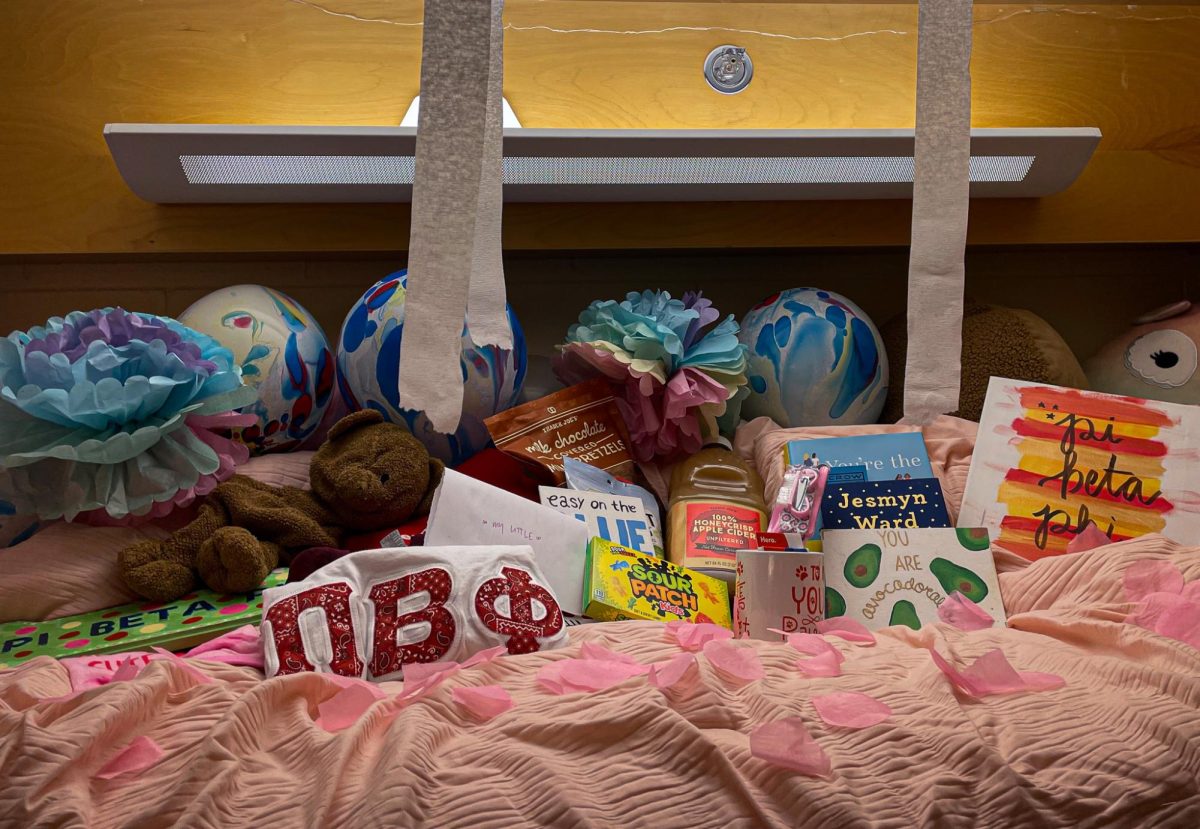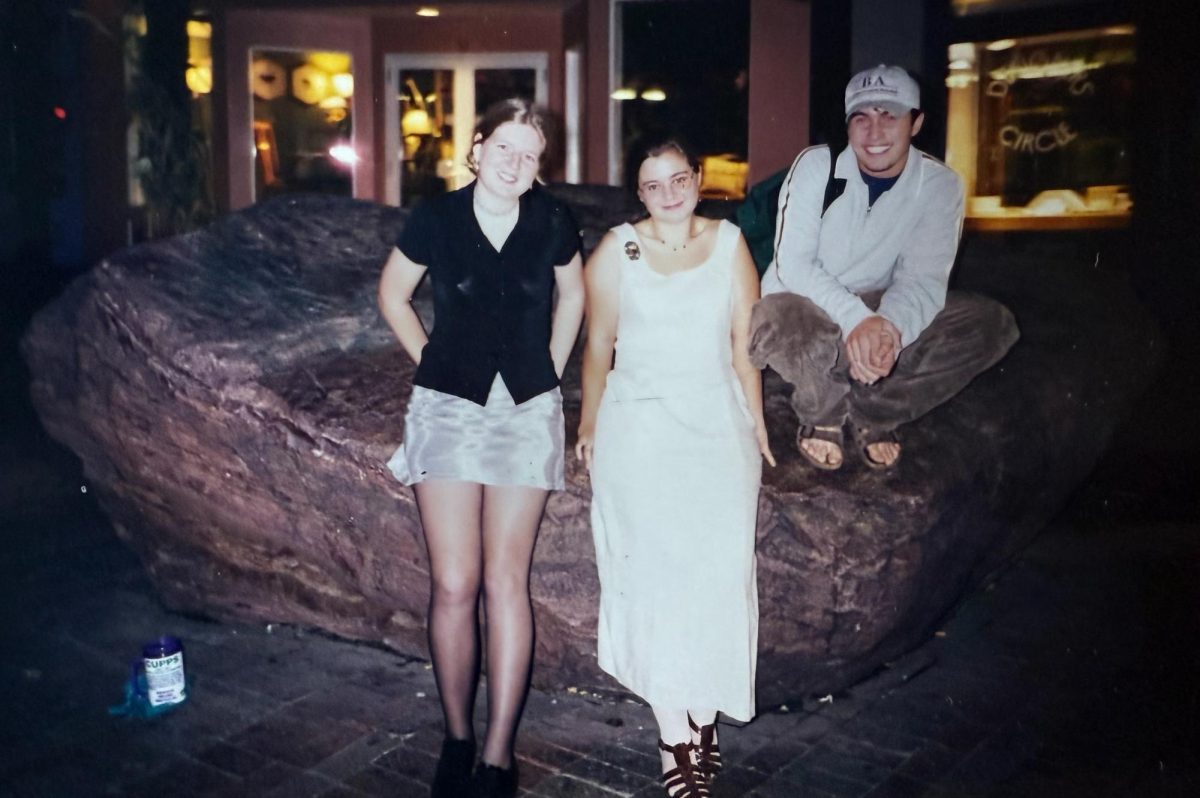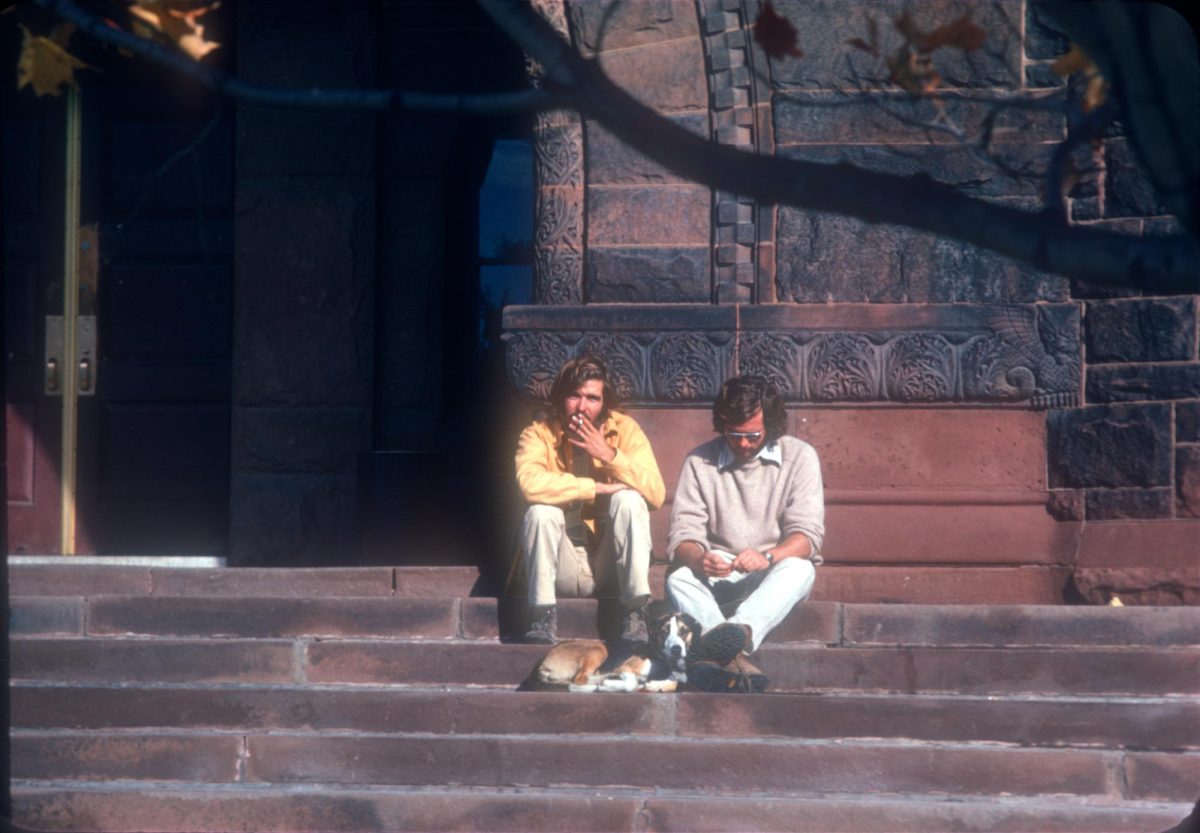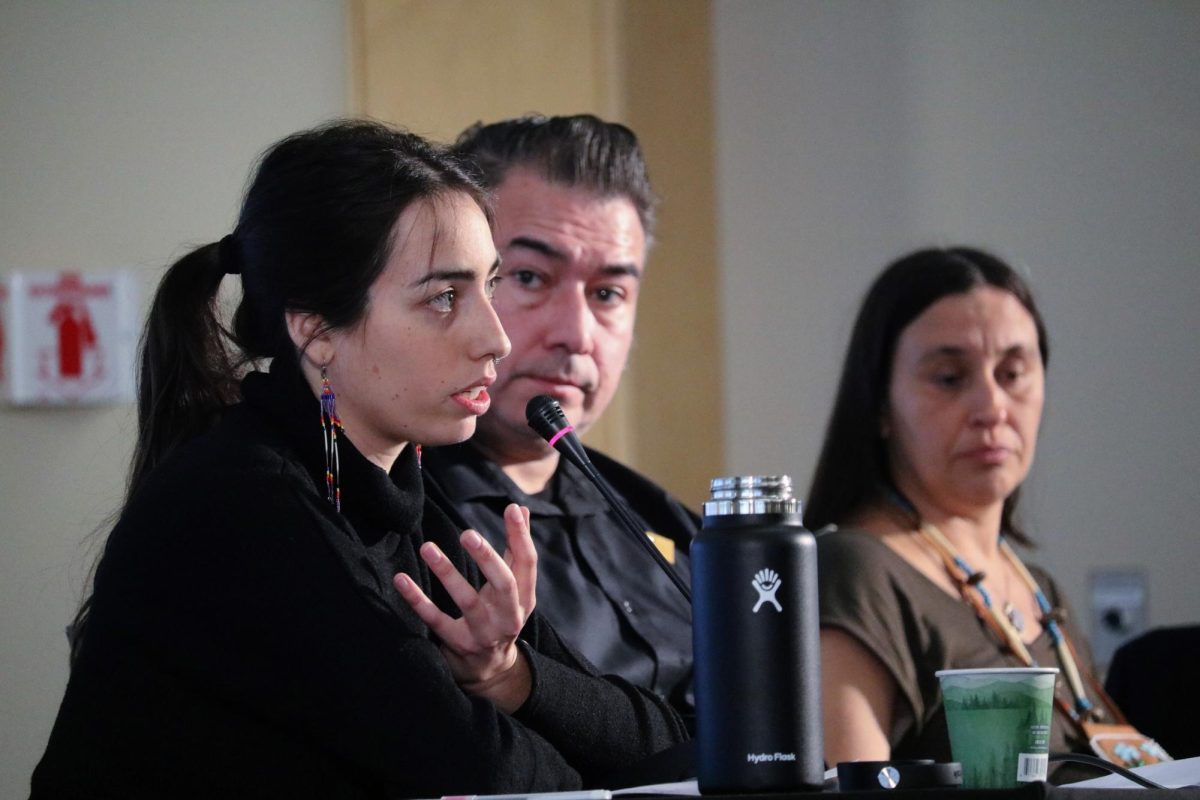You’re in the Davis Center Marketplace, about to scrape the food scraps off your plate into the bin labeled “compost,” when a fellow student turns to you and says, “Do you know UVM doesn’t actually compost that?” It may come as a surprise to some, but UVM does, in fact, compost — 4.6 tons each week from campus eating locations, according to the UVM website. “Students tend to spread ‘rumors without first learning the facts,” Recycling & Waste Manager of the Physical Plant Department Erica Spiegel said. “The fact is a truck operated by Casella Waste Systems comes to campus 5 days per week to haul food waste. It is picked up from 6 dining locations on campus, and delivered directly to Intervale Compost Products.” UVM pays for the large amount of composting it does. For composting food waste, UVM pays a monthly collection fee to a hauler of $2,800 per month for 10 months of the year or about $28,000 per year, Speigel said. Students admit to overhearing the misconception. “There was a rumor last year that captured my attention. I was under the impression for a period of time that UVM didn’t compost,” junior Zach Hirsch said. “It wasn’t until I did an investigative project for an honors college class that I realized the rumors weren’t true.” Both staff and students are involved in the composting process at particular eating locations. “The vast majority by weight — roughly 70 percent — of food waste is coming from the resident dining halls including Harris Millis and Cook Commons,” Spiegel said. That said, students sometimes lack diligence when separating scraps, and the system has to make do with the slip-ups. “In order to get food waste from students in the retail areas, we also take in some of the packaging waste — paper napkins, paper plates, cups, paper clamshells — because it is virtually impossible to separate out food waste only from retail locations,” Spiegel said. “Thus, the packaging is simply coming along for the ride along with the food waste, as the packaging adds no nutrient value to the compost process itself.” Results of the 2010 Davis Center Waste Sort confirm that many students have trouble distinguishing between trash and compostable materials. According to the results, 214 pounds of trash — half of the total trash, sampled from 70 trash bags — was found to be compostable. Persistence in composting is important, but the goal is not necessarily to collect large quantities of food waste. “Keep in mind, more is not always better. Our first order of business should be to reduce the amount of food waste generated in the first place. Food is costly to grow, produce, transport and prepare, therefore it is truly a shame that any food go to waste,” Spiegel said. Initiatives have been taken on campus to combat the production of excess food waste. Trayfree dining, “a ‘green’ initiative and a recent college dining trend,” aims to reduce the amount of food waste and reduce the amount of water and electricity used for washing trays, according to the UVM website. “March 24-28, 2008, the dining trays at Cook Commons were removed. The EcoReps and NFS 250 class conducted an audit of food waste during the event and compared it with the amount of food leftovers when trays were in use. The results indicated a 42 percent reduction of food waste during the trayless days,” according to the website. Since a large amount of students who live on campus eat in the dining halls, only a small portion of the total UVM compost comes from residential buildings. “The UHeights North building is mostly freshmen and sophomores who either don’t know about composting or eat primarily in the dining halls and less frequently cook their own meals,” junior Dylan White said. Other students attribute the lack of composting in residence halls to not having compost bins on each floor. “If there isn’t a compost bin located directly on my floor, I am much less motivated to actually compost,” junior Miriam Rosen said. The 2010 UVM Residence Hall Food Scrap Collection Survey completed by the EcoReps substantiates this sentiment. According to the survey, 33 percent out of 415 students said they didn’t know where the compost bins were located in their resident halls, and nearly 50 percent of the students said they never compost. The survey showed that the largest issues which kept students from composting was the distance of compost bin from their room, uncertainty about bin location, the bad smell of compost and indecision about which items are compostable, respectively. Although composting is both new and a hassle to some students, specialized housing, like the Greenhouse in University Heights South (UHS), specialize in the improvement of systems such as composting. “[The Greenhouse] has had a composting system in place since the inception of the [residential learning] program in 2006. It was conceived of and implemented by students,” faculty director of the Greenhouse Walt Poleman said. “This summer the compost system got another big boost when a newer set of wooden compost containers was built out of local lumber and placed within the UHS courtyard. Now villages can empty their buckets directly there, and use the handy hose to clean up the buckets,” he said. Even more of a challenge than dumping your compost in a bin on the first floor of your residential building, living off campus can require a longer walk. “It’s harder to compost off campus,” Hirch said. “The compost option is less available because it’s not directly in your hall or building, but Intervale Compost is within walking distance of UVM campus.” Despite some of the obstacles to the composting system, the issue UVM has made significant improvements over past few the years. “The real success story at UVM is that our ‘pounds per capita’ of waste has been on the decline for five years. Meaning, as our campus population increased, the amount of trash sent to the landfill decreased,” Spiegel said.
Categories:
Student compost confusion
October 4, 2010
0
More to Discover







